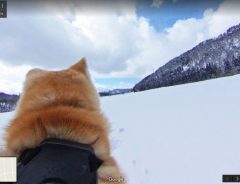- Tags:
- Akita bijin / Akita dialect / Akita Inu / Akita Prefecture / Akitaben
Related Article
-

Akita Maiko hold online dance parties for children during the COVID-19 pandemic
-

Handsome Akita inu’s face turns into adorable squishy blob whenever he sleeps
-

Stubborn Akita Adorably Refuses To Let His German Shepherd Buddy Walk Him
-

Giant 3D Akita dog leaps across 8 digital billboards above Tokyo’s Shibuya Station
-

This Akita Inu Puppy’s Sleeping Pose is Pretty Terrifying
-

Let These Very Good Boys Take You on an Adventure in Akita with Google Dog Street View



Do you live in Japan? Can you get by in Japan without speaking English? Have you passed the JLPT N2?
If you answered yes to all of these questions, you probably think your Japanese is pretty good. And I bet Japanese people hear you speak and without fail reply “Huueeeeey, Nihongo jozu desune!”
Well I’m here to burst your bubble because there’s a new test for whether or not you are proficient in Japanese. This goes beyond saying thanks to the 7-Eleven clerks, reading manga, or even passing JLPT N1.
Akitaben 秋田弁
Have you ever heard of the Akita dialect? One of Japan’s 47 Prefectures, Akita is located on the northern tip of the Honshu island, just below Aomori Prefecture.
Lincun [CC BY-SA 3.0], via Wikimedia Commons
Recognized worldwide for the Akita dog breed, and nationally for its sake breweries and rice-farming.
Ronjav on Flickr.com
The Prefecture is also supposedly home to Japan’s most beautiful women, Akita bijin 秋田美人. I think beauty is in the eye of the beholder, but a quick Google search and you can judge for yourself.
Regardless, even Japanese have recognized how difficult it is to understand Akita’s local dialect. That’s because it sounds like this:
Akitaben is Surprisingly Deep
As the caption at the top of the TV program so aptly states, “秋田県ほとんど「ね」だけで通じる” “In Akita Prefecture, you can get by with just ‘ne’.”
The show’s staff is seen holding up common phrases in Japanese and asks Akita residents to read them in their local dialect.
No/not
ない➞ね
Nai➞Ne
No/isn’t it? (used to confirm with the listener to express agreement)
ないじゃん➞ねね
Nai jan➞Nene
You’re not sleeping right?
寝ないじゃん➞ねねね
Nenai jan➞Nenene
I have to sleep.
寝なきゃ➞ねねば
Nenakya➞Neneba
You can’t sleep right?
寝れないじゃん➞ねれね~ね
Nerenai jan➞Nerene ne
I have to sleep but can’t get to sleep.
寝なきゃいけないのに寝れないじゃん➞ねねば~ねのにねれねねえ~
Nenakya Ikenai noni nerenai jan➞Neneba Nenoni Nerenenee
Now don’t feel bad if you couldn’t understand on your own. Most Japanese (who aren’t from Akita Prefecture) say they can’t make heads or tails out of the quirky dialect either.
I think the key takeaway here is to be careful with your use of “ne” when in Akita. Because what is usually just a sign of your agreement throughout most of Japan may be interpreted very differently in Akita.